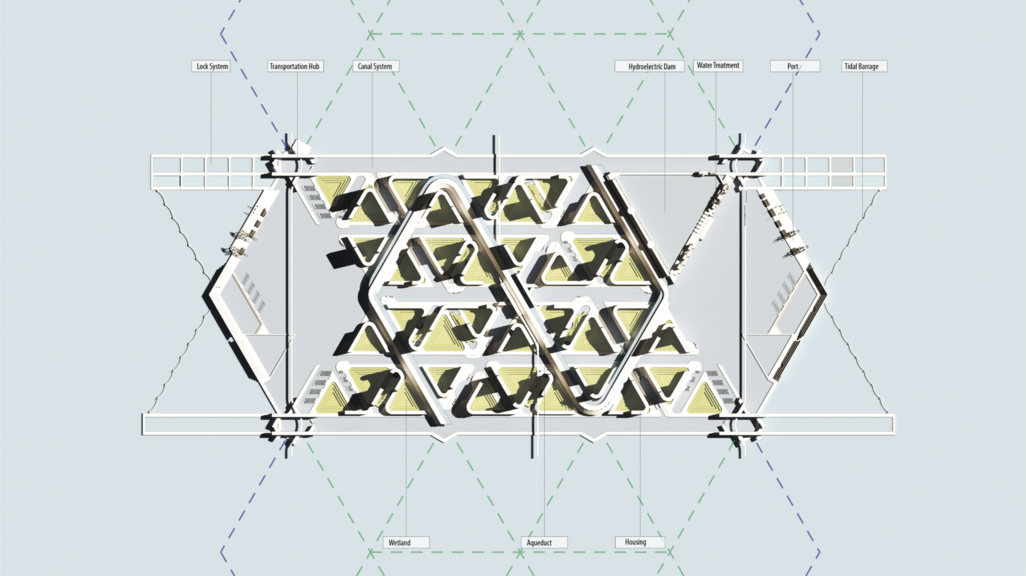
A Disciplinary Guide to Currents: Water
403 Research Studio
2019
News headlines are full of descriptions of destruction wrought by water. We have, in turn, too little or too much of it. For years, Southern Californians have worked to reduce water use in response to a hotter climate and a multi-year drought. While simultaneously, hurricanes of increasing severity and frequency are revealing the human toll and destructive after effects of coastal storm surge, impervious urban development, inadequate stormwater management, and human inaction in the face of climate change. Water is, and will continue to be, at once a global problem and a regional one, the scope of which we can predict but do not fully grasp.
What falls down, must come up. This is increasingly the reality of water in southern Florida and beyond. Miami’s porous limestone bedrock, low elevation, coastal adjacency, and tropical climate contribute to regular exposure to water from above and from below. In the direct path of tropical storms, Miami is on the front lines of climate change.
To imagine a future urbanism for South Florida requires a suspension of disbelief commensurate with that of Miami’s property owners and real estate developers. Thus, as a studio we set aside what we believe is advisable, pragmatic, and economically prudent: the near future, human abandonment of South Florida. Instead we embraced the speculative and what may now seem improbable. Why? Because it doesn’t make sense to continue to build in coastal environments and yet, people will (at least for the foreseeable future.) Over thirteen billion dollars of new residential construction occurred in Miami-Dade County over the past two years. There is simply too much capital at stake and too many inhabitants to relocate preventively. Governments, taxpayers, and real estate owners will continue their attempts to hold the waters at bay and this will sustain real estate value temporarily. Florida’s current real estate development proceeds with combinations of denial and anticipation. Roads are being elevated directly above their current positions with some lifted more than five feet. New construction along the Atlantic coast and intercoastal waterway is raised more than 8 feet above the ground.
This studio proposes urban responses to a rising sea, describing a set of speculative futures in response to forecasted climate change. We locate architecture under rain-soaked roofs and above rising tides. In this space under and over water, we distribute urban form, transportation and utility infrastructure that can no longer survive a rising water table.
Related Faculty |
Heather Roberge |
Related topics |
Infrastructure, Climate Change, Resilience |

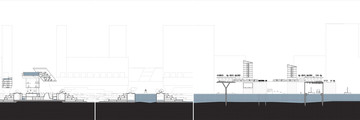
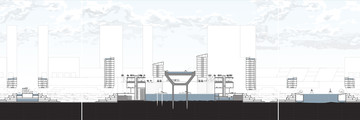
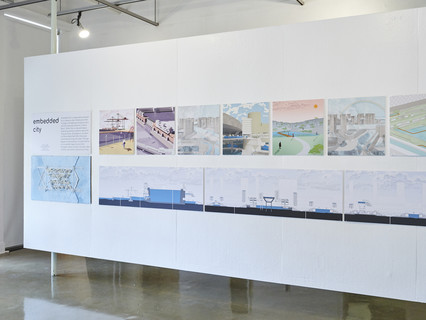


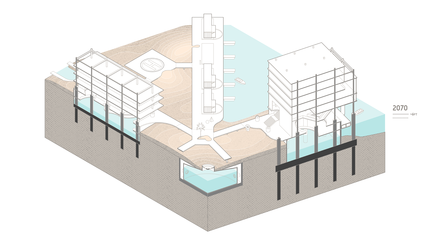
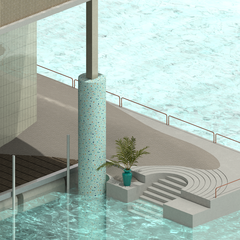



- Chris Doerr, Daniel Greteman, Xihan Lyu, and Caroline Watts
- Chris Doerr, Daniel Greteman, Xihan Lyu, and Caroline Watts
- Chris Doerr, Daniel Greteman, Xihan Lyu, and Caroline Watts
- Chris Doerr, Daniel Greteman, Xihan Lyu, and Caroline Watts
- Chris Doerr, Daniel Greteman, Xihan Lyu, and Caroline Watts
- Yiran Chen
- Yiran Chen
- Xiangkun Hu
- Xiangkun Hu
- Talia Markes-Landes
- Talia Markes-Landes
- Nichole Tortorici